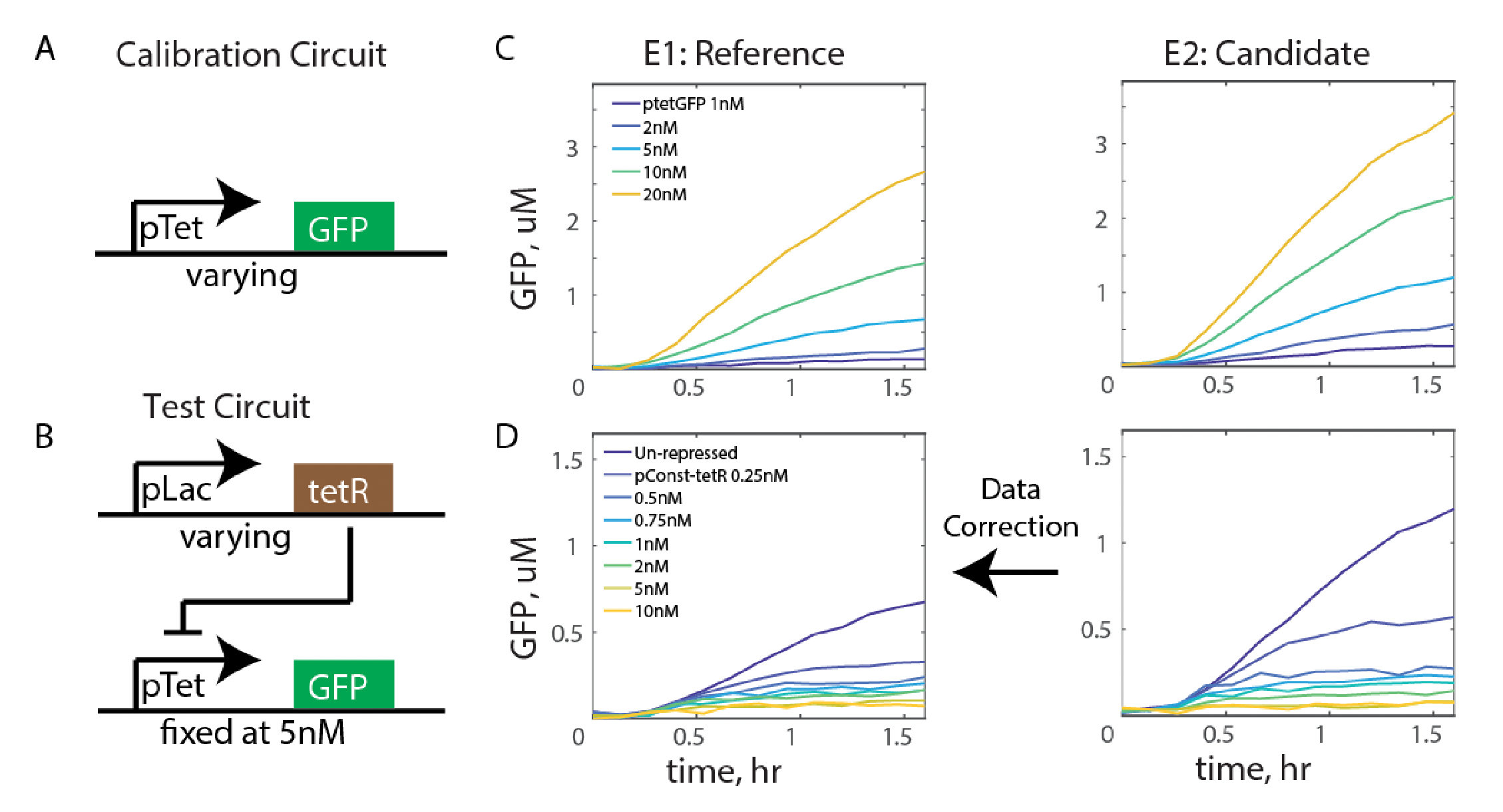Transforming Data Across Environments Despite Structural Non-Identifiability
Published in American Control Conference, 2019
Abstract:
The phenomenon of parameter (structural) nonidentifiability can pose significant challenges to the use of parametrized dynamical models. We demonstrate that, for the case of models being used to transform data across environments, it is possible to derive conditions under which the presence of structural non-identifiability does not hinder our modeling objective. We also show that when the nonidentifiability has a certain structural feature called (thin) covariation, these conditions are violated, and the transformation methodology must be modified. We demonstrate these results on the problem of correcting batch effects in cell extracts, which are used as rapid prototyping platforms in synthetic biology.

Batch correction involves predicting the behavior of some system (the test circuit) in a reference environment, given its measurement in a given candidate environment. It can be achieved if we perform calibration experiments on both environments.
Proceedings:
V. Singhal and R. M. Murray, “Transforming Data Across Environments Despite Structural Non-Identifiability,” 2019 American Control Conference (ACC), Philadelphia, PA, USA, 2019, pp. 5639-5646, doi: 10.23919/ACC.2019.8814953.
The conference paper can be found here.
Recommended citation: V. Singhal and R. M. Murray (2019). "Transforming Data Across Environments Despite Structural Non-Identifiability." American Control Conference (ACC), Philadelphia, PA, USA, 2019 ,pp. 5639-5646, doi: 10.23919/ACC.2019.8814953.
